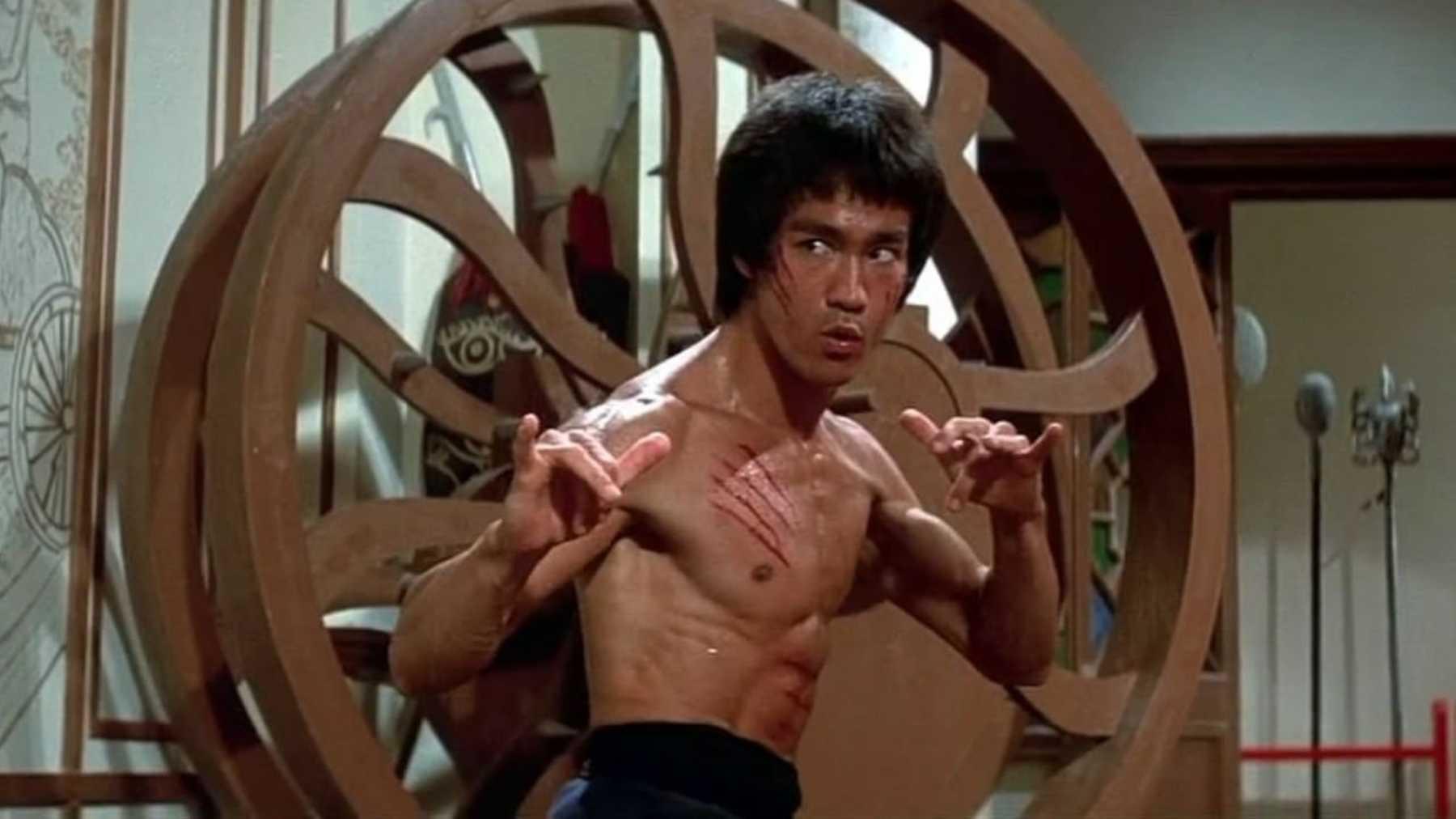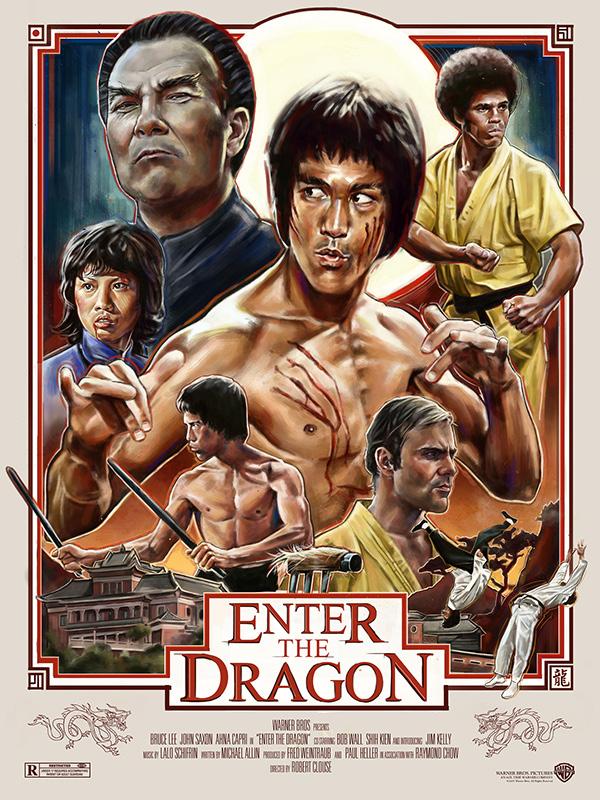
5 minute read
MARTIAL ARTS FILM Enter The Dragon
Martial Arts FILM ENTER THE DRAGON
The martial arts genre, kung fu cinema, as it was exploited in Hong Kong and China for many years (mainly in the 60s and 70s) achieved an unusual success that did not go unnoticed by the Hollywood machinery. A budding star like Bruce Lee was the ideal target to embody the martial artist hero capable of surprising the oriental audience to transfer that astonishment to the North American and international public. Warner Bros. took the risk to test how such a simple but effective cinema could work. Using the Hong Kong formula but applying the ingredients of made in Hollywood cinema, Warner signed Bruce Lee to star in a film that would meet those canons. It was risky, but the charisma and the proper application of the pieces at stake gave rise to a film of enormous popularity, and became the springboard for the genre. Amen, to turn Bruce Lee into a world-renowned icon. Although unfortunately, he passed away (as we all know in strange circumstances) and did not get to see the premiere of the surprising, effective and at times sublime 'Enter the Dragon' ('Enter the Dragon', 1973). An impossible cocktail with an incomparable flavor 'Enter the Dragon' successfully combines ingredients in the purest style of agent 007 (especially a plot that could have been carried out perfectly by Bond, as well as a villain worthy of the Ian Fleming saga), mixed with action cinema, arts martial, without giving up the exoticism provided by a touch of pulp, flashes of blaxploitation and with kitch elements that are as screeching as they are fascinating and iconic. Screenwriter Michael Allin brings a story that is as simple as it is predictable. The director, Robert Clouse, offers a production without brilliance, but without setbacks. The Americans (John Saxon and Jim Kelly) provide the connection, the necessary link to be able to export the product (although in the end they are almost expendable). Lalo Schifrin an outstanding soundtrack that knows how to merge both worlds with the setting, the plot and the martial violence. And Bruce Lee gives us a charismatic protagonist, cocky to say the least, fast like no one seen before and accompanied by a not inconsiderable philosophy. All this gave rise to one of the cult films of the genre, a milestone at the time and that, despite its defects (a common note in this type of cinema, but which is assumed by the amateur viewer in pursuit of the show), get a movie full of brilliant dialogues, with amazing choreography (for the time) and some memorable scenes that achieve a result of absolute entertainment. Excitement from the first shot (the Shaolin temple) to the last (that hairy claw is pure fetish). Zero in argument, ten in charisma ‘Operation Dragon’ presents us with a well-woven, simple, effective, to the point plot but above all designed so that its leading star shines. And as every film of this type boasts, we have a tall villain. Han is a ruthless character, fascinating, very Jamesbondish (excuse me for the word, but I think it defines him exactly) and, above all, a much-needed charisma. Which is a complete success. Especially since the good guy on duty (although he contains as much anger, thirst for revenge and contained violence as his opponent, yes, well channeled and spiritualized) offers an overdose of charisma in each shot. But also of the traits that would make Lee famous: his impenetrable gaze, his amazing agility, his unforgettable screams and a cocky attitude (that even a fierce Cobra has to suffer) is a trademark of the house. Many filmmakers, producers, screenwriters and actors have made an effort in their careers to achieve what Lee displays in such a short time: an unmatched charisma. It was no coincidence that he succeeded in the cinema, beyond becoming a myth due to his unexpected and sudden death. Lee helped choreograph all the fight scenes, brought his extraordinary vision of the martial arts spectacle, although perhaps fortunately (according to the result) he did not
Advertisement

display more influence and was able to focus on endowing his character with his aforementioned qualities and that They are perfectly drawn. The director and the screenwriter already took care of the rest. Like the secondary ones, true puppets to cover the moments in which Lee disappears from the screen. 'Enter the Dragon': pulp, martial arts, blaxploitation, spies in a kitch package One of the most striking aspects of Enter the Dragon is its condition as a fusion film. Impossible mix of elements that, despite the fact that they could distort and produce a shocking and even repulsive effect, achieve the opposite: they endow the film with fascinating icons. From the showcases with the hands (weapons) of Han, opium laboratories, human guinea pigs, not to forget the underground where the true machinery of the villain is hidden and his its darkest side: half-zombie women, terrified prisoners, poorly qualified subjects and a female personal guard whose intentions are barely outlined (intentions are not important here, nor are the consequences, just suggesting and well it succeeds). Beyond this, which remains anecdotal, although it would deserve an analysis and its subsequent influence, we cannot forget the brightest moments. Especially that famous and well-known tremendous scene, the final duel face to face, in a room full of mirrors and Bruce Lee extracting within himself the most lethal, deadly and vengeful side of him. Nothing tremendously original, like the rest of the film, but with an amazing result full of emotion. That game of mirrors offers an outstanding show and is the very essence of the entire film. To deny martial arts cinema and this unforgettable 'Enter the Dragon' by considering it a subgenre or a lowclass cinema is to miss out on the show offered by a Bruce Lee who managed to embroider a role that captures a good part of his own personality, and that, not without reason, manage to project internationally and turn it into an icon of cinema.
And it is that ‘Enter Dragon’ is a classic that exceeds its genre.













